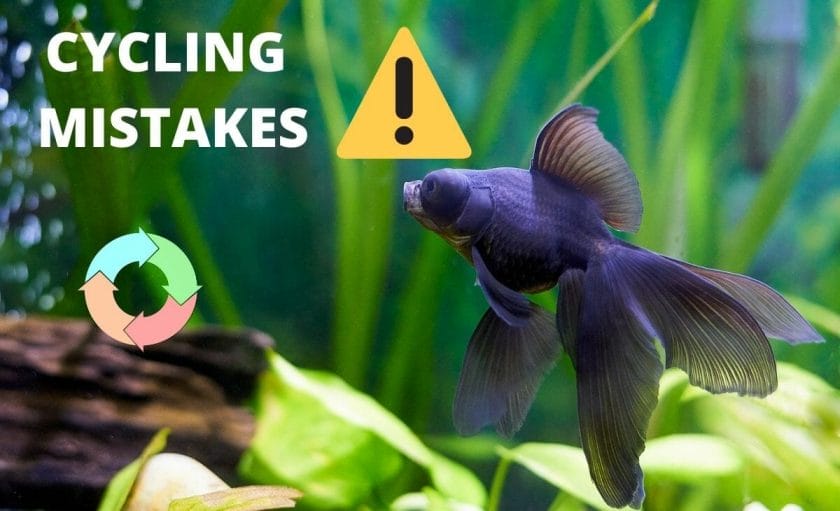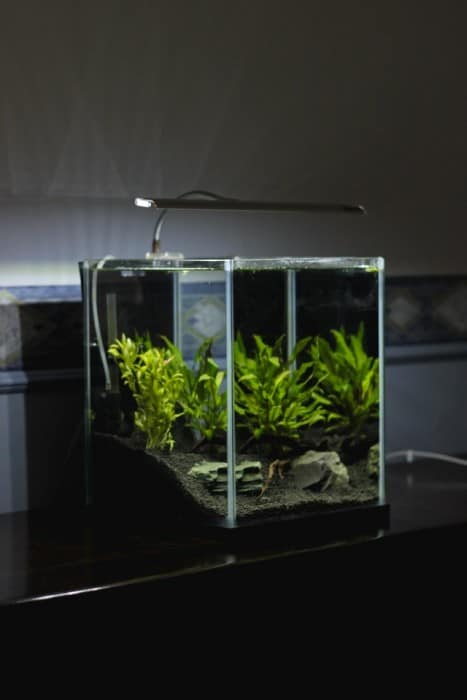How To Know If Tank Is Cycled Without Test
Do you have an aquarium at home? Are you having a hard time determining whether the tank is cycled without a test? If so, keep reading to learn the tips and tricks on how to know if tank is cycled without test.
Understanding the Pain Points of Determining a Cycled Tank
Owning an aquarium can be a fun and rewarding experience. However, some aspects of it can be frustrating. One of which is determining whether or not the tank has cycled without a test. Most aquarium owners may not know what to look out for or how to detect these signs, leading to poor health of their pet fishes or the overall aquarium environment.
Answering "How to Know if Tank is Cycled Without Test?"
The signs of a cycled tank can be seen through your aquarium's water quality and fish behavior. If the water is clear and clean, and the fish are active, then it's a good sign that the tank has cycled. Fishless cycling is also a good method in which you "cycle" your fish tank with no fish. This method involves adding ammonia to your tank and monitoring the ammonia levels until the nitrate levels start to rise. This method has its own advantages like there is no danger to the life of the fish if the process fails.
Summarizing Key Points
If you want to know if your tank is cycled without using a test, then you must keep an eye on the water quality and fish behavior. Besides, fishless cycling can save you time, hassle, and money. In this blog post, we will discuss how to know if tank is cycled without test in more detail to help you address this issue with ease.
Targeting "How to Know if Tank is Cycled Without Test?"
When I first started with my aquarium, I was struggling with knowing when it has cycled. It was all about trial and error. From my past experience, one way to know if your tank is cycled is when your fish start to show their colorful and healthy look and behave actively. However, I also learned that there is a foolproof way of detecting a cycled tank, and that is through fishless cycling. Fishless cycling is a great alternative that saves fish, is quicker, and less stressful. It mimics the natural nitrogen cycle while ensuring no harm to your fish friends.
The Benefits of Fishless Cycling
Fishless cycling has a lot of benefits. First, there is no risk of harm to your fish. Second, this cycling process is much quicker than with real fish. The process will only take a couple of weeks, whereas the process with real fish might take months. Lastly, it is less stressful and time-consuming since you don't have to monitor the fish's health and well-being.
Steps for Fishless Cycling:
1. Add ammonia to the tank
2. Monitor the ammonia levels until nitrate levels start to rise
3. Wait for the nitrate levels to spike and then start to drop
4. At this point, you should perform a 25% water change before adding fish to the tank
Understand What You Need to Look Out For
While fishless cycling can make your life easier, ensure you understand what you should look out for to keep your aquarium healthy and habitable for your fish. A cycled tank should have zero ammonia and nitrite levels, while the nitrate levels should be as low as possible.
Personal Experience with Understanding Fish Behavior
After dealing with my aquarium for a while, I've learned that one of the most recognizable signs of a well-cycled tank is your fish's positive behavior. When fishes are happy and healthy, they will move around regularly, swim to the top of the tank for air, and interact with their surroundings. You should also notice that their colors will be more vibrant and full after the tank is cycled.
Question and Answer
- Q: How long should I wait before adding fish to a cycled tank?
A: It's recommended that you wait at least a week after the nitrates spikes and then start to drop before adding any fish to the tank. - Q: Can a tank still be cycled if there is algae buildup?
A: Yes, algae buildup in a tank does not affect the cycle process; it might even help reduce high nitrate levels. - Q: Should I remove any plants in my aquarium during the fishless cycling process?
A: No, plants are significant because they assimilate ammonia and nitrite levels while adding oxygen to the water. - Q: Do I have to keep the filter running all the time?
A: Yes, the filter helps optimize the cycling time and prevents the tank's water quality from becoming toxic to your fish friends.
Conclusion of Understanding Whether Your Tank is Cycled or Not
In summary, knowing whether your tank is cycled or not is essential in ensuring a healthy and safe environment for your fish. Fishless cycling can be a good alternative to test kits and live fish in cycling your tank. It also saves time, hassle, and money. Remember, it's not just about getting your tank cycled, but also about maintaining a healthy living environment for your fish friends.
Gallery
How Do I Know When My Tank Has Cycled? (Answered)

Photo Credit by: bing.com / cycled answered
How To Know If Tank Is Cycled Without Test! - Aquariumia

Photo Credit by: bing.com /
How To Know When Tank Is Cycled (Signs Of A Cycled Aquarium)

Photo Credit by: bing.com /
Is My Aquarium Cycled? ( 6 Signs Of A Cycled Aquarium You Need To Know

Photo Credit by: bing.com / saltwater cycled terrarium materiale acquario rimless aquariums brine unsplash muscat karl acqua varied thami aqua anlage osmose funktioniert sustaining meilleurs
How Do I Know When My Tank Has Cycled? (Answered)

Photo Credit by: bing.com / cycled tank know when

0 Response to "How To Know If Tank Is Cycled Without Test"
Post a Comment